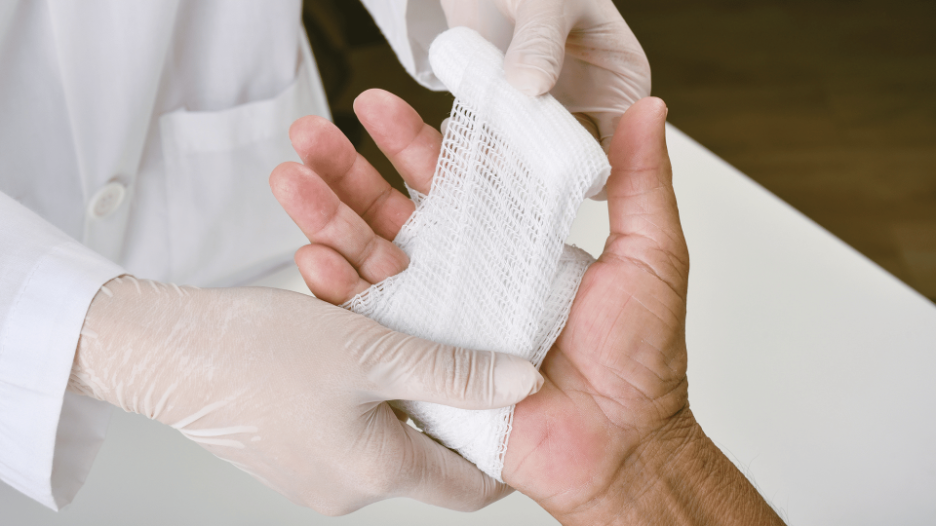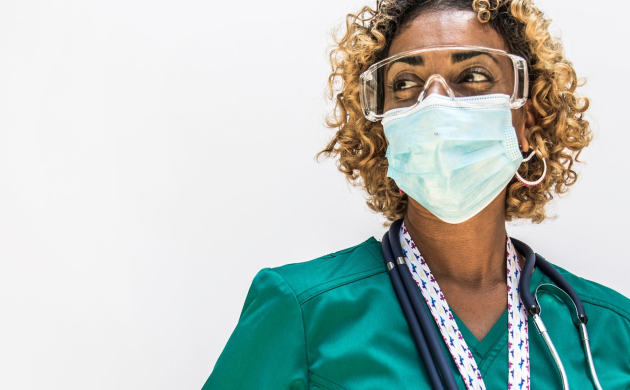
Healing step by step: the 4 wound healing stages.
Understanding how your body heals a wound can be incredibly helpful, especially when you're trying to take good care of yourself. Let’s walk through the four main stages of wound healing, the timeline, and what signs to watch for that might indicate your wound isn’t healing as it should.
Wound healing stages.
The body’s process for healing wounds is truly impressive and involves four key stages:
- Stopping the bleeding. Right after an injury, your body works quickly to stop the bleeding. Blood clots form to create a scab, protecting the wound from dirt and bacteria. This happens within minutes.
- Inflammation. Next, your body sends white blood cells to the wound site to fight off any germs and start cleaning out debris. This stage can last up to six days and often involves redness, swelling, warmth and some pain around the wound.
- Building new tissue. Your body starts to rebuild the wound by growing new tissue. Collagen and other substances help fill in the wound, and new blood vessels form to supply nutrients. This stage can last from a few days to several weeks.
- Strengthening. The final stage involves the new tissue gaining strength and flexibility. This stage, also called remodeling, can last for months or even years as your skin continues to repair and strengthen itself.
What is the normal timeline for wound healing?
The healing timeline can vary depending on the wound’s size, depth, location and your overall health. Here’s a general idea of what to expect:
- Stopping the bleeding. Immediate to several minutes
- Cleaning and protection. Up to 6 days
- Tissue growth. A few days to 3 weeks
- Strengthening. 3 weeks to several months or even years
Age, nutrition and health conditions can influence how quickly your wound heals.
What are the signs of good wound healing?
Monitoring your wound for signs of good healing can give you peace of mind and help ensure that everything is progressing as it should. Here are some positive indicators to look out for:
- Reduced redness and swelling. Your wound might initially be red and swollen, but these symptoms should gradually decrease over time. Less redness and swelling indicate that the inflammation stage is progressing well.
- Decreasing pain. As the wound heals, you should notice a gradual reduction in pain. Persistent pain could indicate an issue, so lessening discomfort is a good sign.
- Formation of new tissue. Look for new skin or tissue growth at the wound site. This might start as a pink or red area that slowly covers the wound. The presence of scabs is also a sign that your body is protecting the new tissue as it forms.
- Wound closure. A healing wound will begin to close up, reducing in size as the edges come together. This is a crucial part of the proliferation stage.
- Minimal discharge. A small amount of clear fluid is normal as your wound heals, but it should decrease over time. Any discharge should not have a foul odor.
- Normal skin color. As the wound heals, the surrounding skin should return to its normal color, indicating that the inflammation subsides and new skin forms.
- Scab formation. Scabs are essential in protecting the wound from bacteria and debris. A well-formed scab indicates that the healing process is on the right track.
What indicates poor wound healing?
It’s important to know the signs of poor wound healing so you can address any issues early.
Watch for these indicators:
- Persistent redness and swelling. If the redness and swelling don’t go down after a few days, it could mean there’s an infection.
- Increasing pain. If the pain gets worse instead of better, that might be a sign something’s wrong.
- Foul odor or discharge. A bad smell or pus-like discharge from the wound is a red flag for infection.
- No progression. If your wound doesn’t seem to be healing, it might need some extra care.
- Fever. If you have a fever, it could mean the infection is spreading and you need medical attention.
If you observe any of these signs, it's important to act promptly. Seeking professional help, such as at CityMD, is a responsible step to ensure your wound receives the necessary treatment and guidance for proper healing.
Dealing with the wound healing stages with CityMD.
Understanding the stages and timeline of wound healing helps you care for your wound properly. However, if you’re ever in doubt or need expert care, rest assured that your nearest CityMD is ready to provide a thorough evaluation and effective treatment. We’re here to help you heal step by step.

We’re ready to care for you.
Visit any CityMD urgent care location in your community today for an evaluation with one of our expert providers.